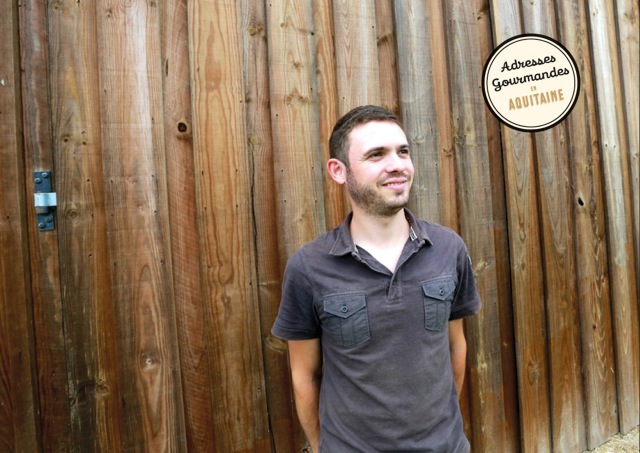
Fattened duck in the highest heaven
By Laure Espieu
A sweet and sugary smell still pervades the cannery. Autumn is approaching, the fig trees have given up their generous bounty, it’s time to prepare the marmalade that will subtly enhance the test of a plate of foie gras. The farm still operates as if in slow motion, the ‘gavage’ or cramming will be starting soon. The pots are ready, and within the next two weeks the ducklings that waddle about in the shade of the maize plants will return to the farmyard together, to be fattened in the traditional manner.
‘It is the duck that calls the tune’
says Julien, a young 28-year-old farmer, bustling about. Soon things will get really busy. With the maize harvest, the first ducks will be fattened. It is a period of intensive work, ending with the Christmas markets and food fairs. In Doazit, in the Chalossaise countryside, this small working farm has five employees. 16 hectares are dedicated to crops and all the harvest is used to raise 240 Mulard ducks in succession. The webbed creatures arrive when they are just a day old and pass their first weeks in heated buildings, sheltered from the elements, before they are released to discover the fields and hillsides for the next 11 weeks. After their experience in the open air, they are kept in a specially equipped room to fatten them over 15 days. The cramming is done by Julien and his father Eric, by hand, twice a day using a basic mix of whole grains, just as their grandparents did before them.
‘It is the traditional method and has never varied, explains the young farmer. Behind it there is a whole state of mind. We are constantly depending on the duck, we talk to it, stroke it. It is the duck that is in charge, not us. Respect for the animal is paramount, because to have a good foie gras, the duck should not suffer, it should be comfortable.’
And foie gras, at the Lafenêtre farm is the engine that drives production. A product of the ‘terroir’ par excellence, symbol of gourmet living, manufacture of this choice food has remained a craft activity. When the liver is cut out, selection is rigorous, it must not be too fat, it should have a good even colour, and should be firm yet supple at the same time. ‘When choosing, you have press with your finger, leaving a trace but without making a deep mark ’, explains Julien Lafenêtre. Then it is time for the kitchen. In the cannery, Valerie the mother is in charge. A whole foie gras, mi-cuit, perfumed with figs or Espelette pepper, she does wonders with a few ingredients, her recipes are simple and uncomplicated. Gourmets will also appreciate her duck in confit, sausages, axoa, or stuffed quails, all made with the same care for authenticity. The laboratory is buzzing as the free-range ducks render their bounty.
Environmental approach
Julien Lafenêtre enjoys this balance between tradition and innovation. With his degree and a master’s under his belt he returned to the farm with plans for excellence.
‘What we hope to do is take the product as far as we can. We have plenty of recipes planned. We test them out, hold tastings, call our friends, the family, and they taste, they give their opinions and when we have a really good one, it goes on sale’.
We have sold the product directly on the farm for the last 20 years, but we also sell in the markets on the Basque coast in summer, and at fairs all over France before Christmas. The young farmer says that this is what motivates him. ‘The customer who comes back to us, who says that it is good, I love that. It is the best reward we could ever have, it makes it all worthwhile.’
And true gourmets are very aware of what they are consuming. ‘Visits are increasingly frequent, and you can see that people are happy to see the processes.’ The Lafenêtres are delighted that there is so much interest. Determined to take an environmental approach on their farm, they take the opportunity to explain the latest additions to their facilities: wooden buildings for improved insulation, photovoltaic panels, lagoonage for waste water treatment, etc. An approach based on respect for their heritage which they hope to share with as many others as possible.
Ferme Lafenêtre
EARL Espaounic
261 route d’Espaounic
40700 Doazit
tel: +33(0) 558 795 923
An article published as part of the Gourmet Addresses application